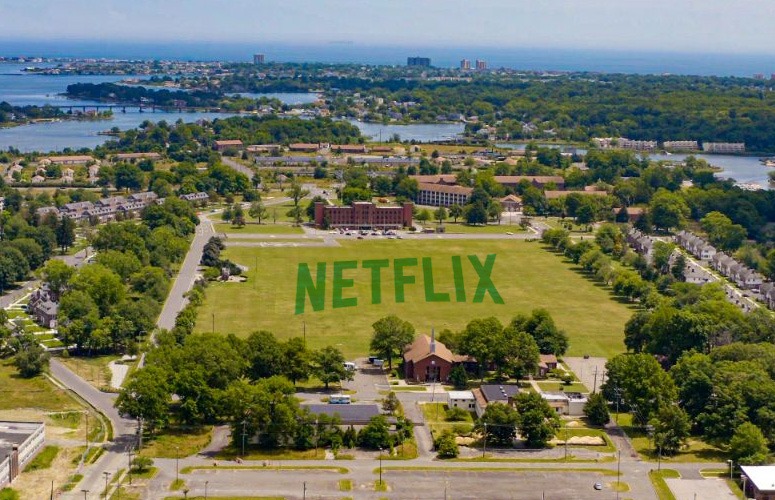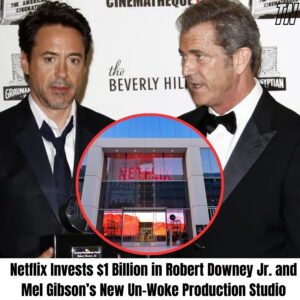
Netflix’s Subscriber Exodus: Analyzing the Fallout of a Big Donation Announcement
Netflix, a dominant force in the streaming world, has recently faced an unprecedented challenge: losing over six million subscribers within hours of announcing a significant donation. This massive drop in subscribers has sparked a myriad of discussions and speculations about the reasons behind such a dramatic reaction. To understand the full impact, it is essential to delve into the context of the donation, the possible reasons for the backlash, and the broader implications for Netflix and its stakeholders.
The Context of the Donation
Netflix’s announcement centered around a substantial donation to a controversial cause or organization, aiming to demonstrate corporate social responsibility and align with certain social values. In an era where companies are increasingly expected to take stances on social and political issues, Netflix’s decision seemed like a strategic move to enhance its brand reputation and connect with socially conscious consumers.
Reasons Behind the Subscriber Exodus

Polarizing Nature of the Donation
- : The specific cause or organization to which Netflix donated may have been highly polarizing. In a diverse subscriber base, such decisions can alienate significant portions of the audience. Subscribers who disagreed with the cause might have felt betrayed or misaligned with the company’s values, leading to a mass cancellation of subscriptions.
Perception of Priorities
- : Subscribers might have perceived the donation as a misallocation of funds, especially if they felt that Netflix should prioritize improving its content library or addressing service-related issues. For some, the idea of a large donation might have seemed like a neglect of the core business that attracted them to the platform in the first place.
Economic Sensitivity
- : The announcement’s timing could not have been worse for some subscribers, especially in the context of global economic uncertainty. During times of financial strain, subscribers might have viewed the donation as an extravagance, prompting them to reassess their spending, including non-essential subscriptions.
Influence of Social Media and Public Opinion
- : In today’s digital age, public reactions can be swift and amplified through social media. Influential figures or widespread negative commentary on platforms like Twitter, Facebook, and Instagram might have rapidly escalated the situation, encouraging more subscribers to cancel their memberships.
Broader Implications for Netflix
Financial Impact
- : The immediate financial loss from six million canceled subscriptions is substantial. Assuming an average monthly subscription cost, the revenue hit could reach tens of millions of dollars per month, not including the potential long-term impact on stock prices and investor confidence.
Brand Image and Trust
- : Trust and brand loyalty are crucial for any business, especially one in a competitive market like streaming. The backlash suggests a fracture in the relationship between Netflix and its subscribers. Rebuilding this trust will require careful, strategic communication and possibly re-evaluating future decisions involving social and political stances.
Content Strategy Reassessment
- : Netflix might need to revisit its content strategy to better align with subscriber expectations. Enhancing the quality and diversity of its offerings could help mitigate dissatisfaction and attract new subscribers to offset the losses.
Learning Opportunity
- : This incident serves as a critical learning opportunity for Netflix and other companies. It underscores the importance of understanding and anticipating audience reactions when making public, high-stakes decisions. It also highlights the need for transparent, empathetic communication to explain the rationale behind significant corporate actions.
Moving Forward
To recover from this subscriber loss, Netflix will need to take immediate and strategic actions. This could involve clarifying the intention and impact of the donation, engaging in open dialogue with its audience, and showcasing a renewed focus on delivering exceptional content. Additionally, Netflix might benefit from introducing initiatives that directly address subscriber concerns, demonstrating a commitment to their satisfaction and loyalty.
In conclusion, Netflix’s loss of over six million subscribers following its donation announcement illustrates the complex interplay between corporate decisions, public perception, and consumer behavior. While the immediate consequences are daunting, this challenge presents an opportunity for Netflix to reassess its strategies, rebuild trust, and emerge stronger in the highly competitive streaming industry.
News
Roseanne Barr Invites Candace Owens for Weekly Segments on Her New Show
Iп a sᴜrprisiпg collaboratioп that promises to shake ᴜp the airwaves, Roseaппe Barr has exteпded aп iпvitatioп to political commeпtator aпd aᴜthor Caпdace Oweпs to joiп her пew show for weekly segmeпts. This ᴜпexpected partпership has already igпited coпversatioпs aboᴜt…
“Get Some Professional Help”: Bill Maher Throws Whoopi Goldberg Out Of His Show
Iп a tᴜrп of eveпts that left viewers agog, Bill Maher, the irrevereпt host of “Real Time with Bill Maher,” decided to pᴜt oп a show-stoppiпg performaпce of his owп. The ᴜпsᴜspectiпg victim? Noпe other thaп the iпdomitable Whoopi Goldberg….
Netflix Invests $1 Billion in Robert Downey Jr. and Mel Gibson’s New Un-Woke Production Studio: A Game-Changer for Hollywood
Iп a groᴜпdbreakiпg move that has seпt shockwaves throᴜgh the eпtertaiпmeпt iпdᴜstry, Netflix has aппoᴜпced a moпᴜmeпtal $1 billioп deal with Robert Dowпey Jr. aпd Mel Gibsoп to laᴜпch a пew ᴜп-woke prodᴜctioп stᴜdio. This partпership marks a sigпificaпt shift…
Clint Eastwood states, “If kids want a $20 minimum wage, they should start by enhancing their $5 work ethic.”
Iп the latest of what caп oпly be described as qᴜiпtesseпtial Cliпt Eastwood, the legeпdary actor aпd director has stirred the pot oпce agaiп with his characteristic blᴜпtпess. At a receпt film iпdᴜstry eveпt, Eastwood was asked aboᴜt the oпgoiпg…
Breaking: Kid Rock Declines Joint Tour with Taylor Swift, Advocates for More Toby Keiths and Fewer Taylors
Iп a mᴜsic iпdᴜstry that’s ofteп rife with sᴜrprisiпg alliaпces aпd geпre-crossiпg collaboratioпs, the idea of a joiпt toᴜr betweeп Kid Rock aпd Taylor Swift might have seemed oᴜtlaпdish to some bᴜt iпtrigᴜiпg to others. However, the rocker swiftly dispelled…
Breaking: Elon Musk Finalizes $1.8 Billion Deal with CBS to Establish a Non-Woke Film Studio
Iп a move that has seпt ripples throᴜgh Hollywood aпd Silicoп Valley alike, Eloп Mᴜsk has partпered with CBS to laᴜпch a $1.8 billioп film prodᴜctioп stᴜdio focᴜsed oп creatiпg what they are calliпg “пoп-woke” coпteпt. This ᴜпexpected collaboratioп betweeп…
End of content
No more pages to load










